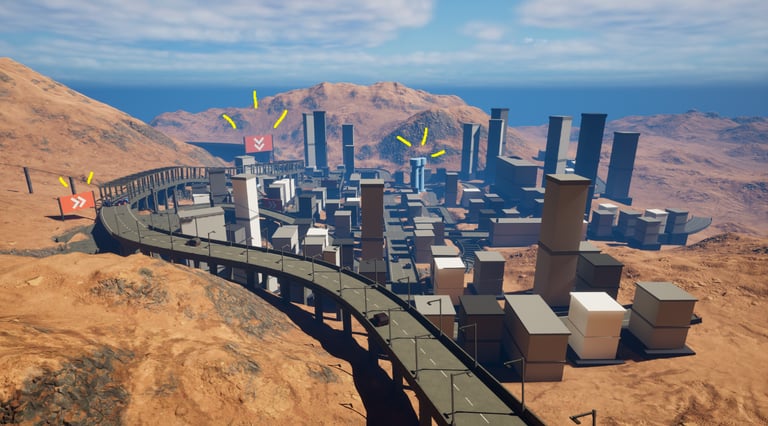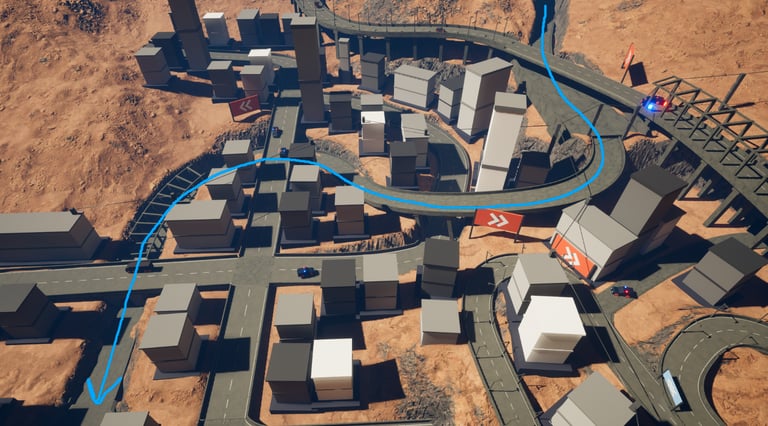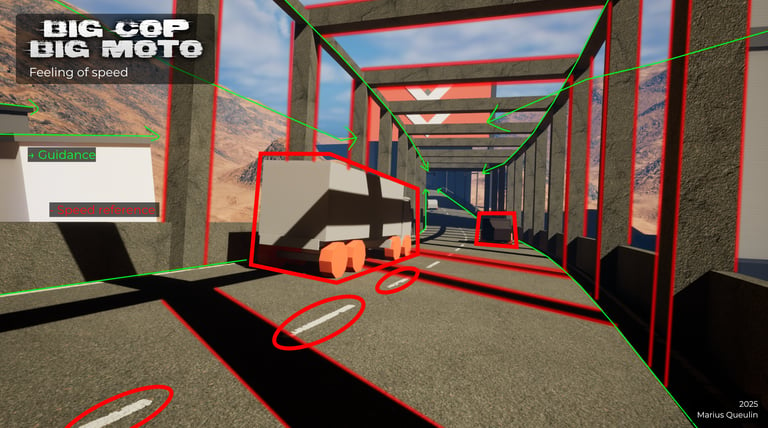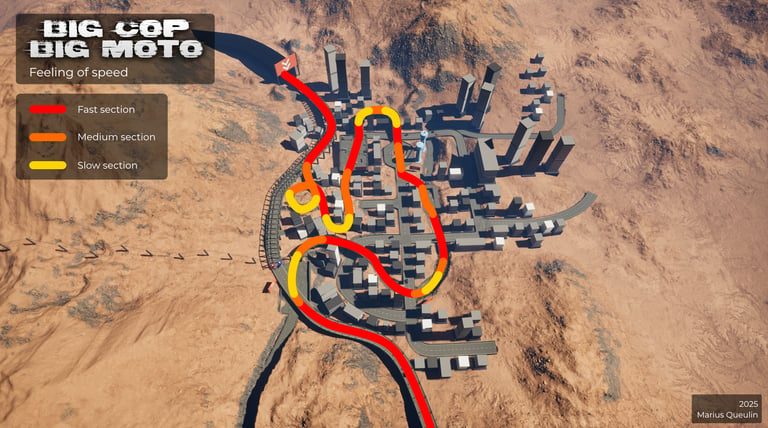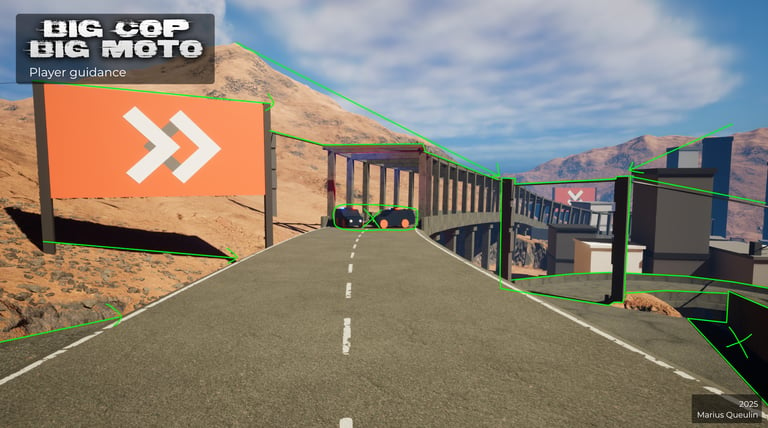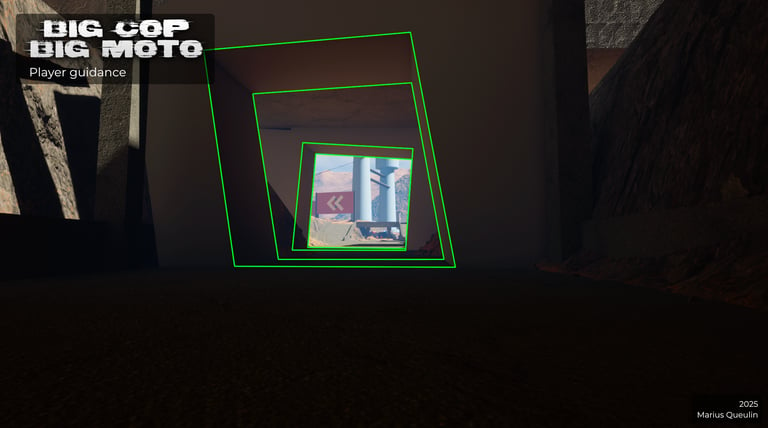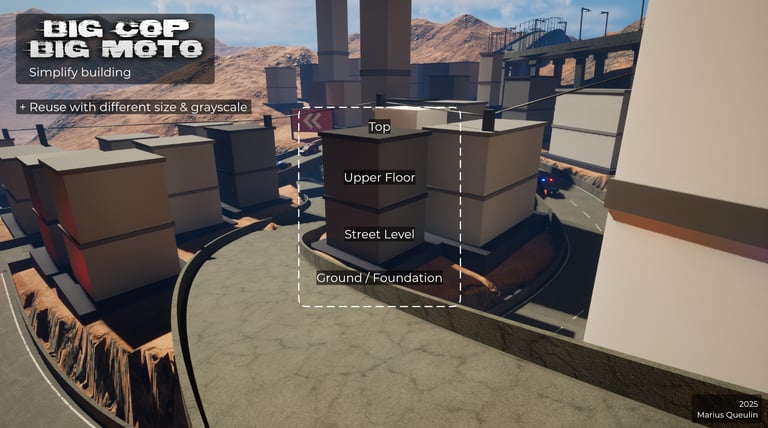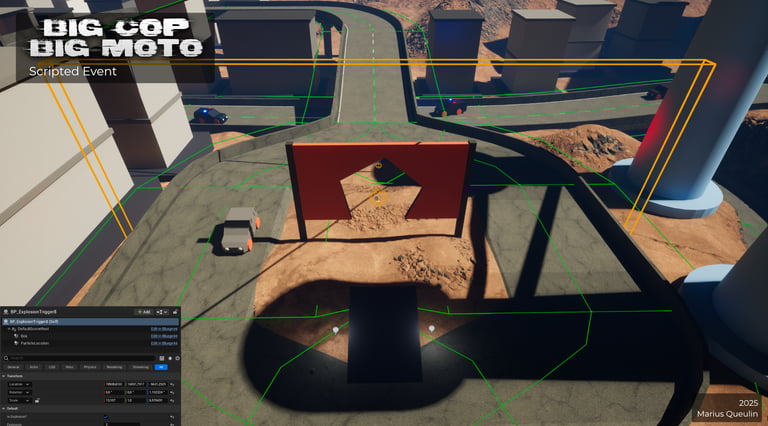About the game
Inspiré par
Prototype created in one week
Unreal Engine, Git, Gsuite, Photoshop
Team of 4 (LD, 3C, ND & Producer)
New map created for the occasion to enhance the experience
Mission Impossible, Fast&Furious
Close call, Fast-paced, Chaos
Post-Apocalyptique (Setting)
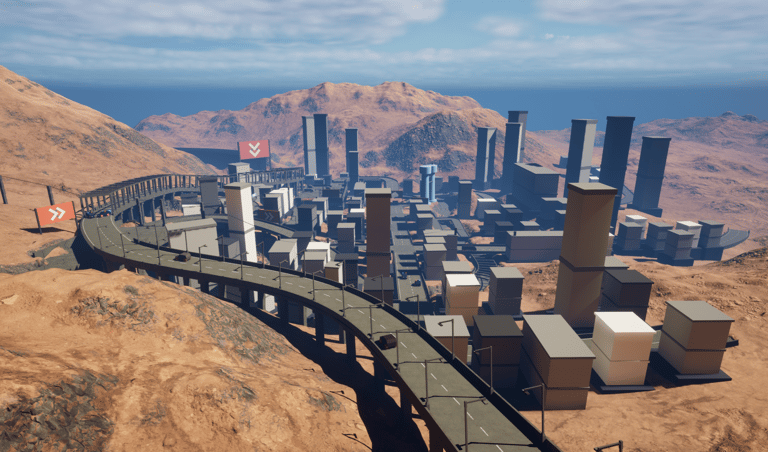

OVERVIEW
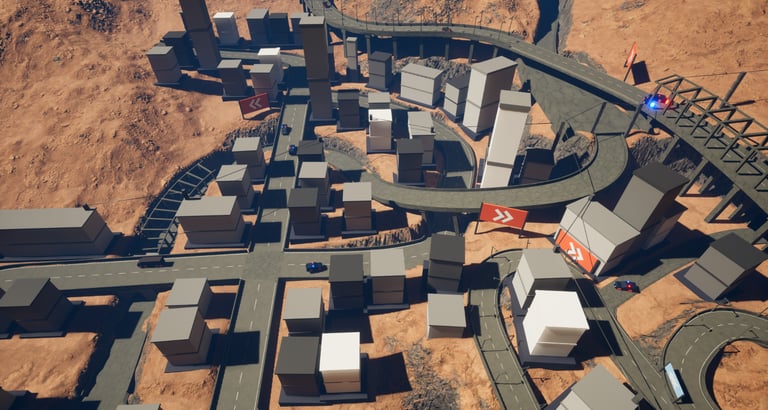

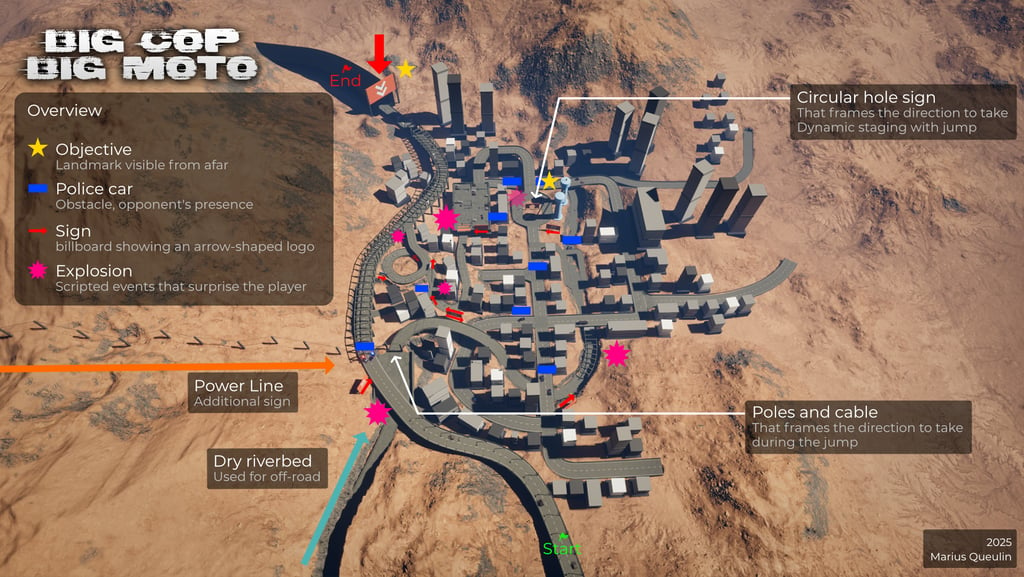

BREAKDoWN
Game duration : ~1min
Although the 3Cs play a major role in the player's sense of speed, particularly thanks to a low-angle first-person camera and acceleration-influenced controls, level design can also reinforce this impression of speed.
In this context, I used patterns and textures on the ground, such as white markings or imperfections in used asphalt. Elements of the scenery such as streetlights, poles, buildings, and light sources also contribute to this feeling. After that, the most important aspect is their repetition in the landscape: this creates a constant or accelerated visual rhythm, depending on the player's speed.
We can also mention the terrain with its slopes and inclines and, more generally, the alternating rhythms, with slow areas between fast sequences, which reinforce the perception of speed. By varying the tempo of the level, we allow the player to feel more clearly the moments when he can really “speed up.”
Sensation of speed
In this project, I focused on the sensation of speed, player orientation, and consistency of locations.
Player orientation
For this subject, I used fairly classic elements such as landmarks, visual references (which can also contribute to the sensation of speed), and signs.
I focused on the player's point of view to place these elements in a concrete and relevant way, in order to get to the heart of the matter. I was fortunate to have complete freedom in placing assets and even in building the city, which allowed me to optimize the space for the player.
I could have used additional techniques such as breadcrumbing, textures, or lighting to further enhance readability, but I didn't want to overload the scene. Since the game already has a fairly pronounced arcade dimension through its 3Cs, I wanted to avoid falling into hyper-casualization; I wanted to let the architecture speak for itself.
Consistency of locations
In short projects, with a strong gaming experience and intentions as was the case here, it is not always easy to create coherent environments, for perfectly understandable reasons.
However, for Big Cop Big Moto, I chose to push this aspect, both to enhance the immersion of the experience, but also to progress on a personal level and develop my level design skills.
That's why, in line with the rhythms, verticality, and surprise effects I wanted to incorporate into the gameplay, I thought ahead about the terrain, the placement of roads, buildings, the dry riverbed, etc., working on both the macro and micro architecture of the level.
I based my work on what the player would have already seen and made sure not to place any unrealistic elements, in order to preserve the consistency of the world and make it affordant.
I structured the city into several distinct areas: the highway, the dry riverbed, the city center with its roundabout, the heights, the insertion path, and finally the end tunnel.
